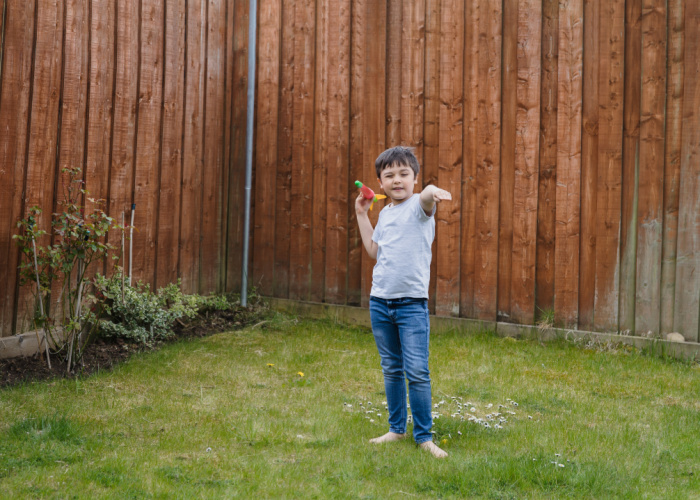It's crucial to know that students with autism and ADHD need special study strategies. Autism…

Is Throwing Toys a Sign of Autism? Understanding the Signs
As a parent, one might wonder if their child’s behavior is typical or indicative of something more significant – is throwing toys a sign of autism?
It’s not uncommon for children to throw things, whether it’s out of frustration or simply experimenting with their environment.
However, for autistic children, throwing toys might be more than just a common behavior – it could be a signal of their unique challenges and strengths within the autism spectrum disorder.
To answer this important question and provide support for your child, it’s essential to understand the underlying reasons behind the behavior and the complexities of the autism spectrum.
In this article, we’ll delve into why autistic children might throw things, how to differentiate between various types of throwing behaviors, and effective strategies to manage and redirect this behavior.

Understanding the Autistic Spectrum and Throwing Behaviors
Children on the autism spectrum often have a unique set of sensory needs that can manifest through different behaviors, including throwing objects.
In this section, we will explore the various reasons autistic children might throw things, how to differentiate between aggressive behavior, and sensory input needs, and how Applied Behavior Analysis can help address the issue of throwing.

Recognizing Sensory Seeking Behaviors in Autistic Children
Sensory seeking behavior refers to the urge some autistic children have to interact with their environment in ways that provide specific sensory input.
This input can be regulating or pleasing for the child, helping them feel more comfortable and secure. Throwing objects is one way a child might seek out these sensory experiences.
Understanding what sensory input your child is looking for can be helpful in identifying triggers for throwing behavior. Some common sensory inputs children may seek through throwing objects include:
- Visual stimulation from watching objects in motion
- Auditory input from the sound made when the object lands
- Physical sensations from the act of throwing and the impact on their hands

Differentiating Aggressive Behavior from Sensory Input Needs
It’s important to differentiate aggressive behavior from sensory-seeking behavior since they require different responses from caregivers.
Aggressive behavior typically results from feelings of frustration, fear, or other strong emotions, whereas sensory-seeking behavior arises from the need for specific types of input.
To differentiate between the two, consider the context in which your child throws objects. Ask yourself the following questions:
- Are there specific situations that seem to trigger the throwing?
- Does the child throw objects only when upset, or is it more random and playful?
- Do your child’s emotions seem to influence their throwing behavior?
- Does providing alternative sensory input reduce the occurrences of throwing?

Applied Behavior Analysis: Addressing the Issue of Throwing Objects
Applied Behavior Analysis (ABA) is a proven strategy for addressing problem behaviors in autistic children, including throwing objects.
ABA therapists work with the child and their caregivers to understand the triggers and motivations behind their behavior, and develop customized approaches to managing or redirecting the behavior.
ABA can help by:
- Identifying the sensory input the child is seeking through throwing objects
- Developing strategies to provide alternative, more appropriate ways for the child to obtain the desired input
- Teaching coping and self-regulation skills to help the child manage their emotions and prevent aggressive outbursts
By understanding the motives behind your child’s throwing behavior and working with professionals to address the underlying sensory and emotional needs, you can help them develop healthier ways to regulate and express themselves.

How to Manage and Redirect Throwing in Autistic Children
Dealing with an autistic child who frequently throws toys can be challenging. However, there are practical strategies for managing and redirecting this behavior.
In this section, we’ll provide actionable advice and techniques to help you stay calm, identify triggers, and teach new skills for communication.
Stay Calm
When your child throws a toy, it’s essential to remain calm and composed. Reacting with frustration or anger can inadvertently reinforce the behavior or escalate the situation.
Take deep breaths, maintain a neutral facial expression, and remind yourself that your child is not intentionally trying to upset you but communicating in the only way they know how.
Identify Triggers
Understanding the triggers for your child’s throwing behavior is crucial for effectively managing and redirecting it.
Observe your child’s environment and routine carefully, noting any patterns that lead to throwing.
Triggers can include sensory input, frustration, seeking attention, or feeling overwhelmed. Once you identify the triggers, you can take steps to minimize them or prevent them from occurring.
Teach New Skills for Communication
Communicating their needs and emotions can be difficult for autistic children. One way to stop throwing things is by teaching them new skills to express themselves.
This might include visual supports such as:
- Picture exchange communication system (PECS)
- Visual schedules
- Communication apps on tablets
Additionally, consider implementing language-based strategies, such as social stories or scripted language, to help your child communicate their feelings more effectively.
Consistent Responses
Establishing a consistent, structured response to throwing behavior can be highly beneficial. Set clear expectations, and calmly remind your child of the consequences if the behavior continues.
Use if-then statements, such as “If you stop throwing the toy, then we can continue playing together.” Consistent, predictable responses help children learn which behaviors are appropriate and which are not.
Engage in Play to Communicate
Play can be a powerful tool for communication, offering opportunities for teaching and learning new skills.
When engaging your child in play, use clear language and simple instructions that they can easily understand.
Encourage them to request items or express their needs during playtime. This practice will help them develop communication skills that can reduce the need to throw toys.
By implementing these strategies and focusing on understanding your child’s unique needs and triggers, you’ll be well-equipped to manage and redirect throwing behavior in your autistic child.#

Conclusion
As parents navigating the challenges of raising an autistic child, it’s natural to wonder if throwing toys is a sign of autism and how to tackle this behavior.
By addressing this important question, you’ve educated yourself about the possible reasons behind your child’s actions, such as sensory seeking and communication difficulties, and have developed an understanding of the broader autism spectrum.
With the strategies and techniques shared in this article, there is hope that you can manage and redirect this behavior more effectively.
The key is to stay calm, recognize triggers, and engage in meaningful play that helps your child communicate their emotions in a healthier way. Emphasizing their strengths and teaching them alternative methods of expressing themselves will pave the way for a safer and more enjoyable playtime.
Remember, supporting your child’s unique needs and fostering a nurturing environment can break the cycle of dangerous toy-throwing behaviors.
So, continue to be the understanding and strong support system your child needs as you both grow, speak, and teach.
With patience, love, and consistency, you can help your child overcome the challenges and embrace their unique abilities.

Frequently Asked Questions
In this section we answer Frequently asked questions about throwing toys and autism.
Is throwing toys a common behavior in autistic children?
Yes, throwing toys can be a common behavior in autistic children. However, it is important to remember that autism is a spectrum disorder, and behaviors can vary greatly among individuals. Throwing toys may be a form of sensory seeking behavior or a result of frustration and other emotions.
How can I differentiate between aggressive behavior and sensory input needs?
To differentiate between aggressive behavior and sensory input needs, observe the context of the situation and the child’s body language. If the child appears overwhelmed or anxious, it may be a sensory need. On the other hand, if the child seems angry or frustrated, it might be an aggressive behavior. Understanding the triggers for each behavior is crucial in determining the appropriate response.
What is Applied Behavior Analysis (ABA), and how can it help with throwing behaviors?
Applied Behavior Analysis (ABA) is a therapy approach that focuses on understanding the relationship between a child’s behavior, environment, and consequences. ABA can help with throwing behaviors in autistic children by identifying the triggers, teaching alternate ways to deal with sensory needs, and developing a plan to redirect and reinforce positive behaviors.
What strategies can I use to manage and redirect throwing behavior in autistic children?
Strategies to manage and redirect throwing behavior include staying calm, identifying triggers, teaching new skills for communication, and using consistent responses. Engaging the child in appropriate play and providing a safe space can also help address sensory seeking behaviors and redirect their focus.
How can I support my child with autism who struggles with throwing behaviors?
To support a child with autism who struggles with throwing behaviors, it is essential to understand their unique sensory needs and triggers. By learning about their specific challenges, you can offer targeted support and implement appropriate interventions, such as Applied Behavior Analysis, to manage the behavior effectively.



This Post Has 0 Comments